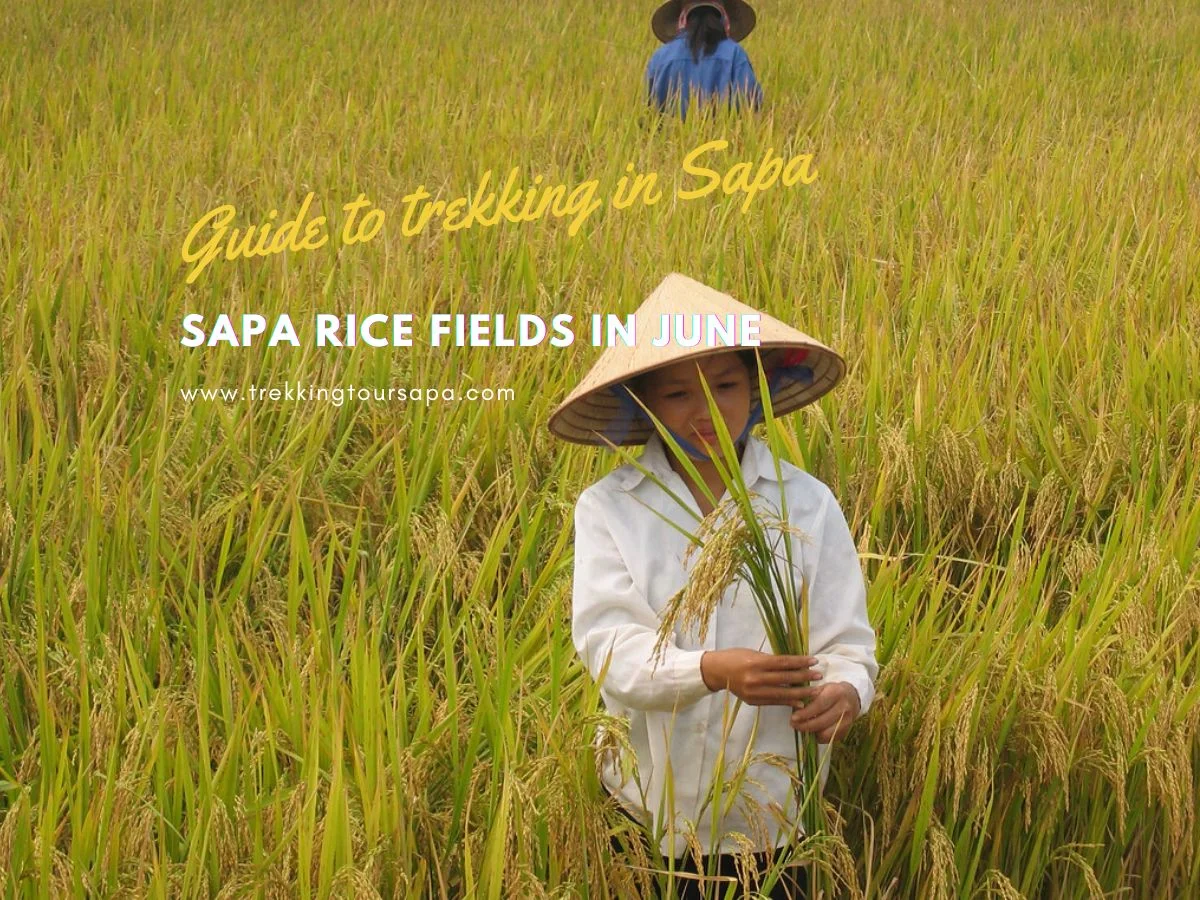As the summer sun beats down on the lush green hills of Sapa, you can’t help but be reminded of the old adage, “the grass is always greener on the other side.” However, in this case, it’s not just the grass that’s greener – it’s also the rice fields. June is one of the best times to visit these incredible terraced fields, when they are at their most vibrant and picturesque.

There’s something truly magical about standing amidst endless rows of rippling rice paddies under a bright blue sky. It’s a feeling that words can hardly describe – a sense of freedom and connection with nature that can only be experienced firsthand. In this article, we’ll take you on a journey through Sapa‘s stunning rice fields in June, sharing insider tips and local knowledge along the way to help you make the most of your trip. So pack your bags and get ready for an adventure like no other!
Table of Contents
ToggleIntroduction to Sapa’s Natural Beauty
Take a moment to appreciate the stunning natural beauty of this breathtaking destination. Sapa‘s trekking trails offer endless opportunities for exploration and adventure, taking you through lush forests, cascading waterfalls, and awe-inspiring mountain vistas. From the highest peaks, you can see the entire valley below, with its terraced rice fields and vibrant greenery stretching as far as the eye can see.

But it’s not just about the scenic views – there is also incredible biodiversity in Sapa‘s natural landscape. The region is home to over 2,000 plant species and countless animal species, making it a true haven for nature lovers. You may spot rare birds or even come across a group of monkeys swinging through the trees. All of this makes Sapa an unforgettable experience that will leave you feeling rejuvenated and connected to nature. And now let’s delve into why these rice fields are so significant…
The Significance of the Rice Fields
You’re about to delve into the significance of Sapa‘s rice fields. As you explore this subtopic, you’ll discover how the agricultural practices of the local communities have shaped and maintained the natural beauty of these terraced landscapes. You’ll also learn how these rice fields are more than just a stunning backdrop – they represent an important cultural heritage that has been passed down through generations.
Cultural Heritage of the Local Communities
Oh, so you think you know everything there is to know about the local communities? Think again, because there’s a whole world of cultural heritage waiting for you to discover. Beyond the stunning sapa rice fields in June lies a rich and diverse culture that has been passed down through generations of indigenous communities. Here are four traditional customs that have contributed to their community development:
- Festivals – These events celebrate important milestones such as harvests, births, and weddings. Not only do they provide opportunities for socializing and bonding among community members but also showcase traditional clothing, music, dances and food.
- Oral traditions – Storytelling has always been an integral part of these communities’ way of life. Elders pass on knowledge about history, mythologies or taboos through oral recitations which are often accompanied by musical instruments or dance performances.
- Textile weaving – This craft is not just a means of livelihood but also represents cultural significance as designs feature symbols and motifs that hold spiritual or historical meanings.
- Homestays – Many locals offer homestay experiences where travelers can immerse themselves in daily routines such as farming or cooking alongside their hosts while learning about their lifestyles.
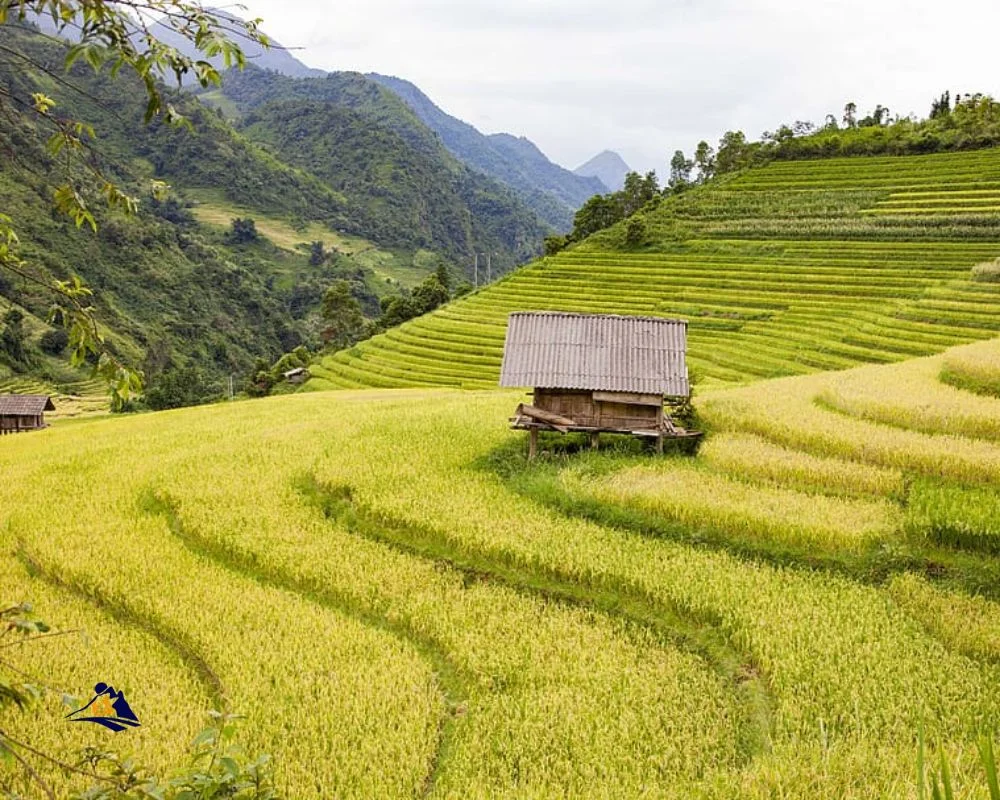
As you explore the cultural heritage of these communities, it becomes clear how deeply connected they are with nature and agriculture. In fact, many traditional practices revolve around agricultural practices such as planting techniques, irrigation systems or animal husbandry. With this foundation established let’s now dive into the next subtopic: ‘agricultural practices.’
Agricultural Practices
In this section, you’ll learn about the agricultural practices that are deeply rooted in the cultural heritage of the local communities and how they sustain their livelihoods. The sapa rice fields in June are a sight to behold, but there’s more to them than just their beauty. The crop diversity is a result of centuries’ worth of knowledge passed down from one generation to another.

The locals have developed irrigation techniques that allow them to cultivate rice on terraces high up in the mountains. They’ve also learned how to intercrop other crops such as corn and beans with rice, making sure that each plant complements the others. This practice not only provides food security for the community but also helps maintain soil fertility. As you explore these rice fields, you’ll see firsthand how these agricultural practices are crucial in sustaining the livelihoods of these communities.
As you continue reading about sapa rice fields, you might be wondering when is the best time to visit? Well, keep on reading as we delve into what makes June an ideal month for visiting this magnificent place.
Best Time to Visit
If you’re looking for the perfect time to witness the breathtaking beauty of the sapa rice fields, then the Best Time to Visit section is just what you need! Here are three things you should know when planning your trip:
- June is the ideal month to visit if you want to see lush green rice paddies in their full glory. This is when most of the planting has been done and the fields are at their most vibrant.
- The weather conditions during this period are also quite pleasant, with temperatures averaging around 20°C (68°F) during the day. However, it’s important to note that there may be occasional rain showers, so be sure to bring appropriate gear.
- If photography is your thing, then make sure you head out early in the morning or late in the afternoon for optimal lighting conditions. Some of the best photography spots include Ta Van Village and Cat Cat Village where you can capture stunning images of cascading terraces and traditional stilt houses.
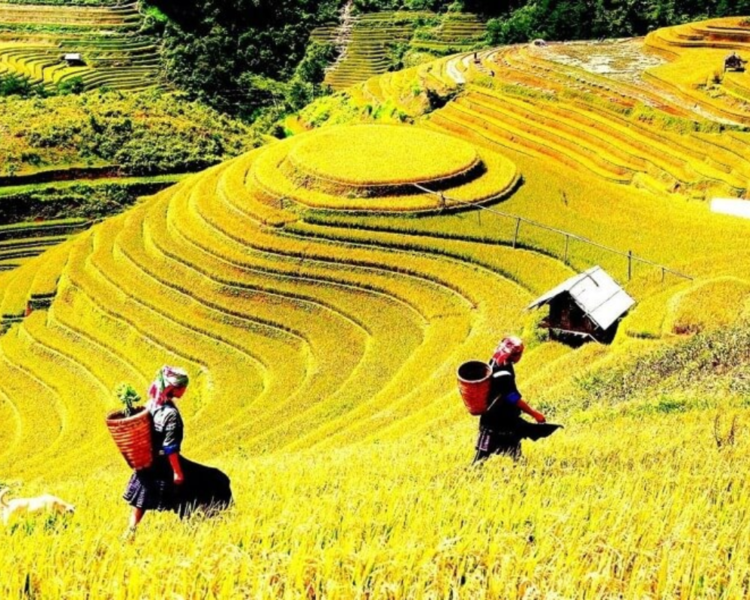
With this information in mind, get ready for an unforgettable experience exploring these magnificent rice fields!
Exploring the Rice Fields
Get ready to immerse yourself in the stunning beauty of these terraced landscapes as we explore the best ways to experience and capture the breathtaking views. The rice fields in Sapa are a paradise for nature photography enthusiasts, with endless opportunities to capture the perfect shot. Whether you want to photograph the sunrise over the terraces or capture local farmers at work, there is no shortage of subjects to focus on.

To truly experience the rice fields, consider taking one of the many trekking routes available. These routes will take you through some of the most beautiful parts of Sapa and allow you to see firsthand how locals cultivate their crops. Not only will you be able to capture incredible photos along your journey, but you’ll also gain a deeper appreciation for this unique way of life. With so many trails available, from beginner-friendly walks to more challenging hikes, there’s something for every level of adventurer.
As you finish up your day exploring the rice fields and capturing magnificent photographs, it’s time to start thinking about accommodations in Sapa.
Accommodations in Sapa
You’ll be delighted to discover a wide variety of comfortable and convenient accommodations available in this charming mountain town, providing the perfect home base for your Sapa adventures. From top rated hotels to budget friendly options, there’s something for everyone. Whether you prefer a cozy hostel or a luxurious resort, Sapa has it all.
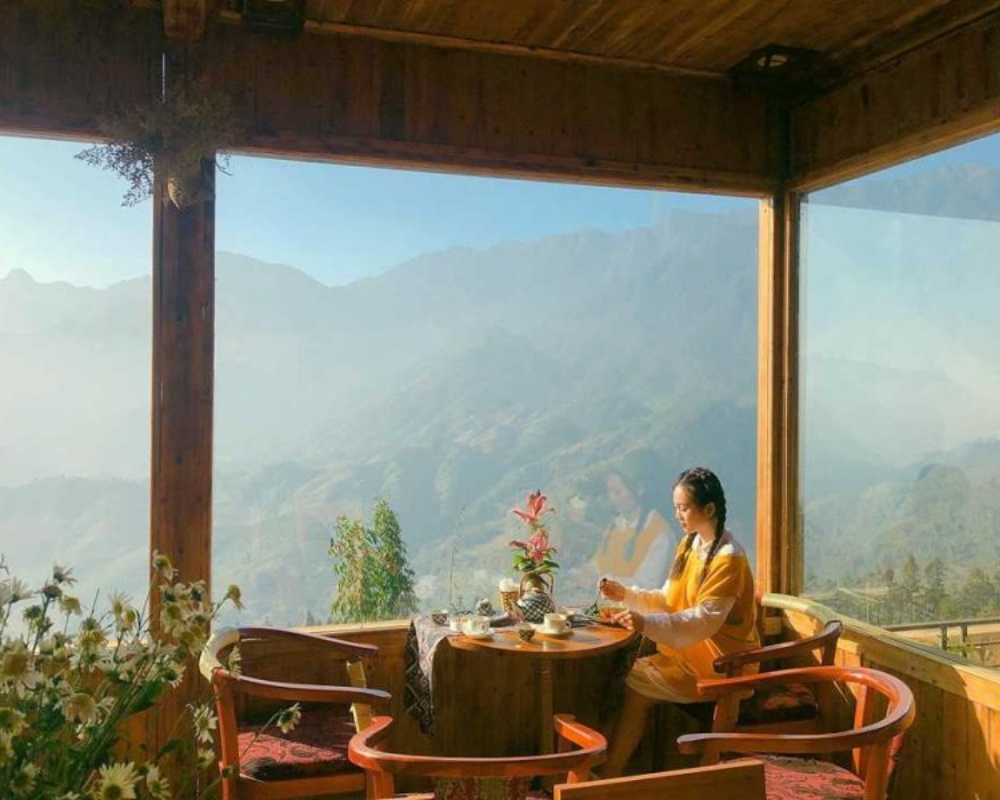
For those seeking an authentic experience, why not try a homestay with a local family? This is a great way to immerse yourself in the local culture while also supporting the community. No matter where you choose to stay, you’ll find that the hospitality in Sapa is second to none. Now that you’ve found your home away from home, it’s time to explore the vibrant local cuisine and culture.
Local Cuisine and Culture
You’re in for a treat as we delve into the local cuisine and culture of Sapa. Try traditional dishes like “thang co” (horse meat stew) or “xoi ngu sac” (five-color sticky rice), both of which can be found at the bustling markets around town. Don’t miss out on the colorful festivals that celebrate everything from harvests to weddings, and be sure to take home some beautiful handcrafted souvenirs made by talented locals.
Traditional Dishes
If you’re looking to savor the flavors of the local cuisine, be sure to check out the traditional dishes offered in this section. The sapa rice fields in June offer a plethora of culinary experiences that will tantalize your taste buds. Traditional recipes like thang co, a soup made with horse meat and offal, and grilled sticky rice cakes called com lam are just some of the must-try dishes.
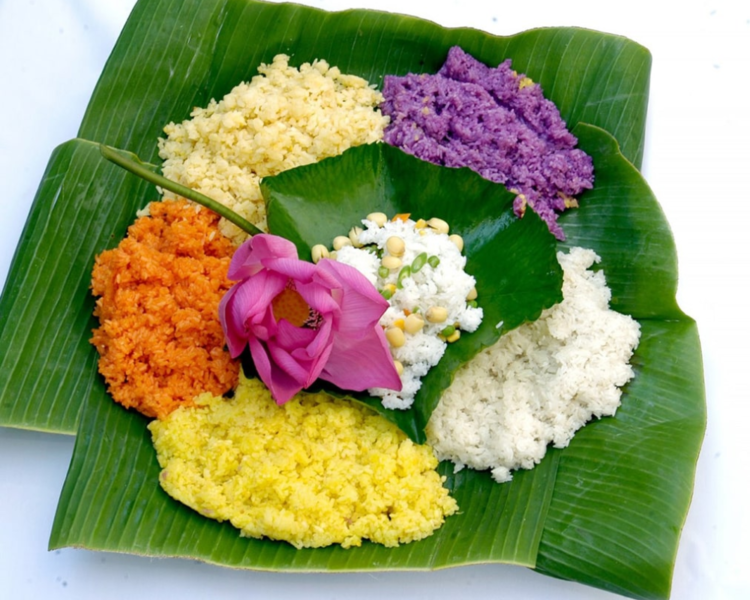
Apart from these popular choices, there are other unique delicacies you should try such as chao au tau – a black bean porridge served with pork belly or fried tofu balls; banh day – a round cake made of glutinous rice flour stuffed with mung beans and pork; and xoi ngu sac – five-colored sticky rice topped with shredded chicken or pork floss. These dishes are not only delicious but also reflect the rich cultural heritage of Sapa’s ethnic communities. So, don’t miss out on these traditional delights while exploring the stunning landscapes around Sapa.
As you explore further into markets and festivals around Sapa, you’ll find an array of fresh produce and street food vendors selling their wares. From colorful fruits like dragon fruit to exotic herbs and spices like lemongrass and turmeric, these markets offer an opportunity to sample new flavors and ingredients. Keep an eye out for festivals like Gau Tao where locals come together to trade livestock or Bac Ha Market where visitors can witness traditional dances performed by Hmong women in their vibrant clothing. The markets and festivals offer not just food but also glimpses into daily life in this mountainous region of Vietnam.
Markets and Festivals
Don’t miss out on the vibrant markets and colorful festivals of this mountainous region. From June to September, festive celebrations take place in various villages, including Bac Ha Sunday Market and Sa Pa Summer Festival. You’ll find yourself immersed in a lively atmosphere filled with traditional music, dance performances, and authentic local cuisine.
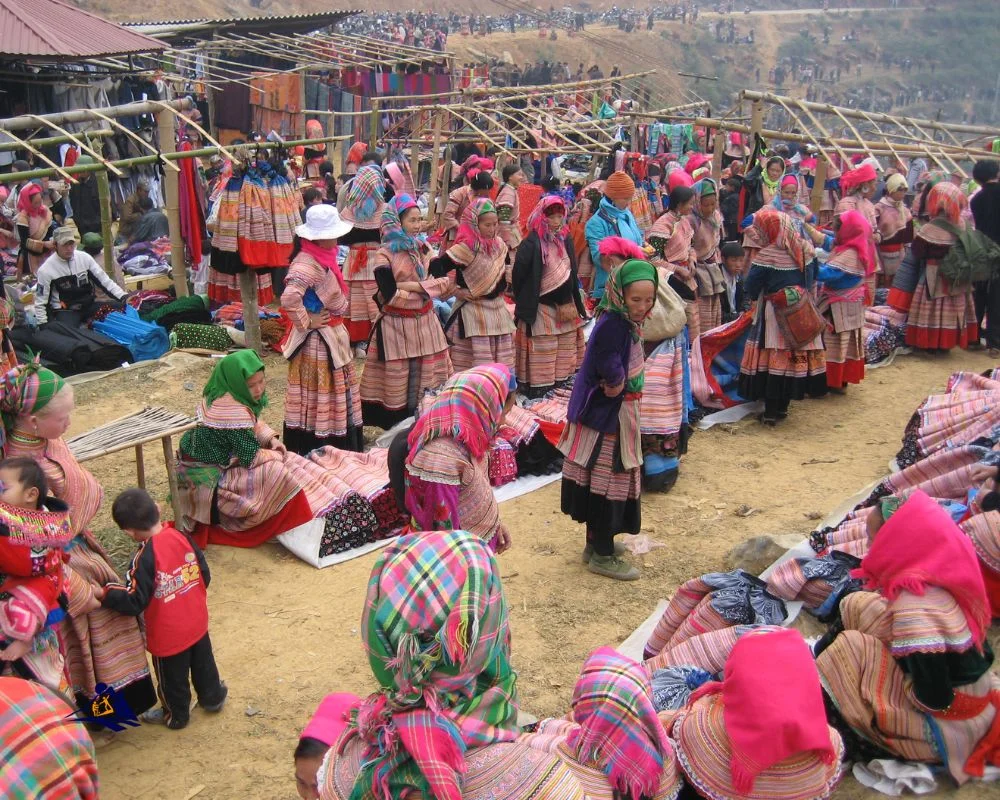
Be sure to visit the local produce markets which offer fresh fruits and vegetables grown by Hmong farmers. You can also pick up handmade crafts such as bags, scarves, and jewelry that showcase the unique cultural heritage of the area. As you explore these bustling markets, you’ll gain insight into daily life in the region while indulging your senses with new sights, sounds, smells and tastes. With so much to see and experience at these local events, you won’t want to miss a thing before moving on to learn about the exquisite handicrafts produced in this region.
Local Handicrafts
Explore the rich cultural heritage of this mountainous region by discovering the exquisite handicrafts produced by local artisans. Handicraft traditions are deeply ingrained in the indigenous communities that reside in Sapa, and it is evident in the intricate details that are woven into each piece. From weaving to embroidery, these artisanal products reflect the vibrant culture and history of the region.

The handicraft market in Sapa is a must-see for any traveler who appreciates traditional artistry. You can find a plethora of locally made items such as colorful textiles, hand-carved wooden items, silver jewelry, and much more. Shopping at these markets not only supports local businesses but also preserves ancient techniques passed down through generations. By purchasing handmade crafts, you take home a unique memento while also supporting sustainable tourism practices that help preserve this beautiful region for years to come.
Sustainable Tourism Practices
If you’re interested in sustainable tourism practices, there are a few key points to keep in mind. First and foremost, responsible travel tips can help ensure that your impact on the environment and local communities is minimal. Additionally, supporting local communities through conscious spending choices can make a big difference in terms of economic sustainability. Finally, environmental conservation should be prioritized by choosing eco-friendly accommodations and activities whenever possible. By following these guidelines, you can make a positive impact while still enjoying all that your destination has to offer.
Responsible Travel Tips
Take care to be mindful of the impact your actions have on the environment and local communities while traveling. As a responsible traveler, there are several ways you can minimize your negative impact and leave a positive one behind. Here are some tips for responsible travel:
- Pack light and bring only what you need to reduce waste and support eco-friendly transportation options.
- Purchase ethical souvenirs that are sustainably sourced and support local artisans, rather than contributing to mass-produced items that harm the environment.
- Respect local customs and traditions by dressing appropriately, learning basic phrases in the local language, and asking permission before taking photos.

By following these tips, you can help preserve the natural beauty of places like Sapa rice fields in June while supporting local communities. In addition to minimizing your negative impact on the environment, it’s important to also consider how your presence can positively contribute to the community. The next section will explore ways in which travelers can support local communities during their stay.
Supporting Local Communities
Now that you have learned about responsible travel tips, let’s talk about supporting local communities when visiting the sapa rice fields in June. When planning your trip, consider choosing community initiatives that benefit the locals and their economy. One way to do this is by booking a homestay with a local family instead of staying at a big hotel chain. This not only provides an authentic experience but also helps to support the community financially.
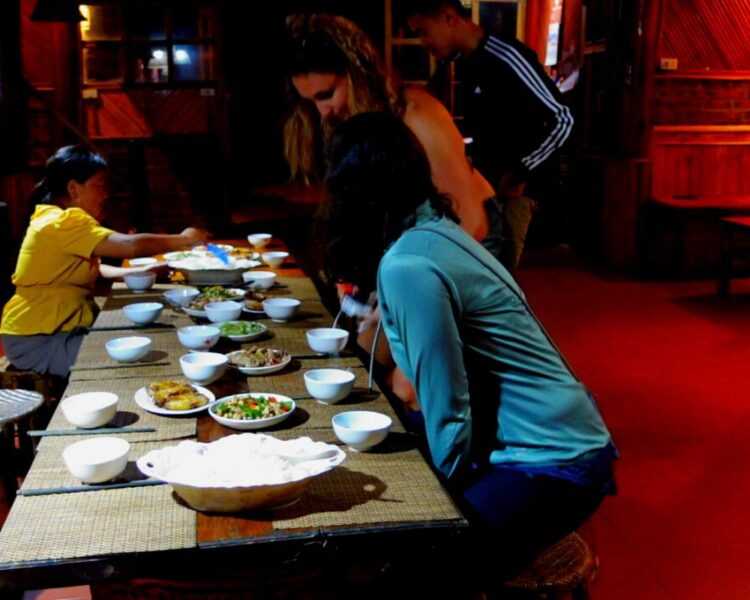
In addition to selecting accommodation options that benefit the locals, you can also choose locally owned restaurants and shops for your meals and souvenirs. By doing so, you are directly contributing to the economic impact of the area and helping to sustain it for future generations. It’s important to remember that by supporting local businesses, you’re not only immersing yourself in the culture but also giving back to those who call Sapa home.
As we continue our journey through Sapa’s beautiful rice fields in June with a conscious effort towards responsible tourism practices, we must turn our attention towards environmental conservation.
Environmental Conservation
Let’s now focus on preserving the natural beauty of the stunning Sapa rice fields in June by discussing environmental conservation. As a responsible traveler, it is important to take part in ecotourism initiatives that strive to protect and sustain the environment. One way to do this is by supporting local wildlife conservation efforts, such as adopting sustainable practices like using reusable water bottles instead of plastic ones or participating in eco-friendly tours.

When exploring the breathtaking landscapes of Sapa, it’s crucial to be mindful of your impact on the environment. The region’s unique flora and fauna are an integral part of its charm and must be protected for future generations to enjoy. By taking small steps towards environmental conservation, we can ensure that this destination remains unspoiled for years to come.
Conclusion and Travel Tips
You’ll want to stick around until the end of this section for some helpful tips on how to make the most out of your time exploring the stunning sapa rice fields in June. Firstly, when it comes to travel safety, always be aware of your surroundings and take precautions such as carrying a whistle or pepper spray. It’s also wise to inform someone of your itinerary and keep important documents such as passports and visas secure at all times.

In terms of budget planning, there are several things you can do to save money while still enjoying all that this beautiful region has to offer. Consider staying in a homestay or guesthouse instead of a hotel, as they tend to be more affordable. Additionally, try eating at local street vendors rather than restaurants aimed at tourists – not only will you save money, but you’ll get a more authentic taste of Vietnamese cuisine. With these tips in mind, you’re sure to have an unforgettable experience exploring the breathtaking landscapes and rich culture of Sapa’s rice fields in June.
Sapa Rice Fields In June Frequently Asked Questions
What is the history of the Sapa rice fields and how have they evolved over time?
If you’re curious about the history of the Sapa Rice Traditions and how they’ve evolved over time, it’s fascinating to consider the terraced landscapes that define this region. These rice fields were first developed by local farmers as a way to cultivate crops on steep mountainsides without causing soil erosion or other environmental damage. Over time, these practices became refined and perfected, with each generation adding their own unique innovations and techniques. Today, the Sapa Rice Fields are a testament to human ingenuity and perseverance, showcasing the power of tradition in shaping our world. Whether you’re exploring these landscapes in person or simply admiring them from afar, there’s no denying the beauty and significance of this historic agricultural practice.
Are there any specific rituals or customs associated with the planting or harvesting of rice in Sapa?
As you explore the rich culture of rice farming in Sapa, you’ll discover a world filled with fascinating rituals and traditions. From the planting to the harvesting of rice, every step is steeped in ancient customs that have been passed down through generations. One such ritual involves using an old-fashioned tool known as a “rice pounder” to separate grains from their husks. This process may seem outdated in today’s modern world, but it remains an essential part of the farming techniques used by local farmers. Other rituals include offerings made to deities to ensure a bountiful harvest and prayers for the safety and well-being of everyone involved in the process. Whether you’re a seasoned farmer or simply someone who appreciates the beauty and wonder of nature, exploring these customs will leave you feeling inspired and connected to something greater than yourself.
How do the rice fields contribute to the local economy and what are some of the challenges faced by farmers in the area?
The rice fields in Sapa are a vital part of the local economy, providing a source of income for many farmers and contributing to the local market. However, farming in this area poses its own unique challenges, including the need for effective irrigation systems and dealing with unpredictable weather patterns. Despite these challenges, farmers continue to work hard to ensure that their crops are successful each season. As someone who is interested in experiencing the freedom of exploring new cultures, you will appreciate how important these rice fields are to the people of Sapa and how much they rely on them for their livelihoods.
Are there any endangered species or unique flora and fauna that can be found in or around the rice fields?
As you explore the lush greenery of the rice fields, you may come across some unique flora and fauna that are endemic to this region. The Sapa rice fields are home to a number of endangered species such as the Chinese pangolin and the black-shanked douc. In recent years, biodiversity conservation has become a key focus for farmers in this area who have been implementing sustainable farming techniques to protect these fragile ecosystems. By using natural fertilizers and crop rotation methods, farmers are able to maintain soil health and reduce their impact on local wildlife. As you wander through this picturesque landscape, take a moment to appreciate the delicate balance between agriculture and conservation that has been achieved through years of hard work and dedication.
What are some of the lesser-known hiking trails or off-the-beaten-path destinations to explore in Sapa?
Looking to explore beyond the beaten path in Sapa? You’re in luck because this mountainous region of northern Vietnam is a treasure trove of offbeat trails and hidden gems waiting to be discovered. Whether you’re a seasoned hiker or just starting out, there are plenty of options for you to explore. One such trail is the Ta Van Loop, which takes you through picturesque villages and lush rice paddies with stunning views of the surrounding mountains. Another great option is the trek to Silver Waterfall, where you’ll encounter cascading waterfalls and breathtaking scenery. No matter which trail you choose, make sure to bring your sense of adventure along for the journey!
Conclusion
So, you’ve learned about the breathtaking beauty of Sapa’s rice fields and everything that makes this destination so special. Now it’s time to pack your bags and experience it for yourself!
As you travel through the lush green landscapes and immerse yourself in local culture, you’ll feel a sense of connection with nature that is truly unforgettable. From the delicious cuisine to the sustainable tourism practices, every aspect of Sapa is designed to create an authentic experience for visitors.
So what are you waiting for? Book your trip today and prepare to be amazed by the stunning scenery and warm hospitality of this incredible destination. Trust us, it will be an adventure unlike any other – one that will stay with you long after you return home. Don’t miss out on this opportunity to witness nature’s beauty at its finest!
